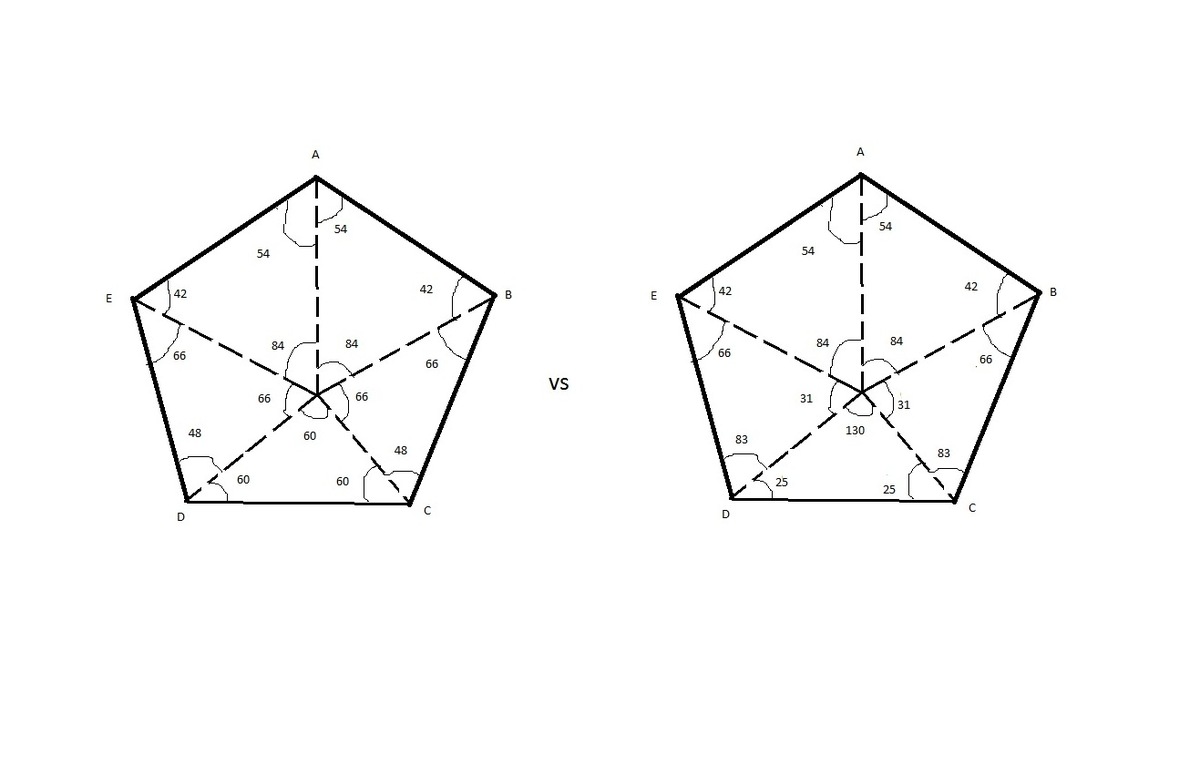Particular Pentagon Point shared by Matt Enlow

I think this problem has more than one solution.Please refer to attached file.
No vote yet
1 vote

I think this problem has more than one solution.Please refer to attached file.
Easy Math Editor
This discussion board is a place to discuss our Daily Challenges and the math and science related to those challenges. Explanations are more than just a solution — they should explain the steps and thinking strategies that you used to obtain the solution. Comments should further the discussion of math and science.
When posting on Brilliant:
*italics*or_italics_**bold**or__bold__paragraph 1
paragraph 2
[example link](https://brilliant.org)> This is a quote# I indented these lines # 4 spaces, and now they show # up as a code block. print "hello world"\(...\)or\[...\]to ensure proper formatting.2 \times 32^{34}a_{i-1}\frac{2}{3}\sqrt{2}\sum_{i=1}^3\sin \theta\boxed{123}Comments
I'll call the middle point M. Because of the Law of Sines, we must have EMsin∠EAM=EAsin∠EMA, and also EMsin∠EDM=EDsin∠EMD.
Rearranging and combining these, and using the fact that EA=ED, we must have sin∠EAMsin∠EMA=sin∠EDMsin∠EMD. This equation holds in the diagram on the left, but not on the right.
The point defined in the problem is uniquely determined. You cannot claim that ∠EDM is any arbitrary angle.
Note: I've cropped your image, so that the pentagons which you drew are now much larger.